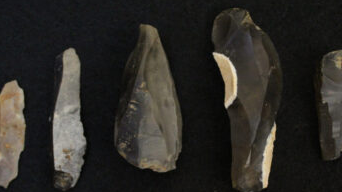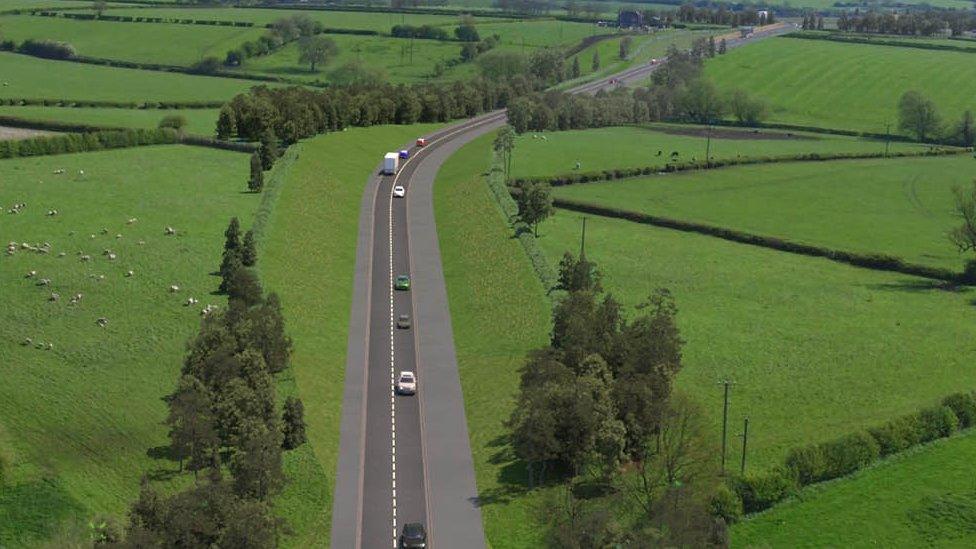Historical 10,000BC artefacts found on road project

A number of pieces of pottery discovered at the site
- Published
Historical artefacts dating back 12,000 years have been discovered by archaeologists on the site of a major Leicestershire road project.
The discoveries, which include flint instruments from the Mesolithic Period (10,000-4,000BC), have shed new light on land on the outskirts of Melton Mowbray.
Researchers from Archaeological Research Services were brought in to investigate the area as part of work on the £116m North and East Melton Mowbray Distributor Road.
A spokesperson for the company said: “Our excavations are continuing to produce interesting and significant results.”
Significant discoveries
Work on the distributor road started in May 2023 and it will eventually run more than four miles along the north east of Melton Mowbray, with the aim of relieving congestion in the town.
The £116m scheme is scheduled to open to traffic in late 2025.
The archaeological team has been working on the site since 2023 and it has made a number of discoveries since the autumn.
Much of the work has focused on areas close to two River Eye tributaries.
Significant discoveries from the Mesolithic Period indicate the area was home to hunter gatherer communities.
Flint artefacts were found in an ancient river channel, which it is suspected were associated with hunting animals such as deer.

Flint instruments were discovered at the site of the North and East Melton Mowbray Distributor Road
During the Iron Age (800BC-43AD), the researchers concluded the valleys and streams of the area became farmland, as a large enclosure system was discovered, with other findings including Iron Age pottery, animal bone and burnt stones.
Meanwhile, Roman artefacts were also found along with the site of a potential Roman vineyard.
The researchers said their discoveries demonstrated how the area that will soon become a major road around Melton Mowbray became a key area of agriculture right up to modern times.
Agricultural history
A spokesperson for the company said: “In the succeeding periods [after the Roman period], these fertile valleys were part of the agricultural landscape that surrounded Melton Mowbray in the medieval and post-medieval periods, as evidenced by the archaeological and earthwork remains of ridge and furrow cultivation, a pattern of land use that remained in use right up to the 18th century.
“Our excavations are continuing to produce interesting and significant results, including the site of a potential Roman vineyard.”
The route is one of the biggest ever road projects undertaken by Leicestershire County Council.
Construction on the road, through Galliford Try, started in May 2023.
The road will be a 4.4-mile (7km) route between the A606 Nottingham Road and the A606 Burton Road.
Follow BBC East Midlands on Facebook, external, on X, external, or on Instagram, external. Send your story ideas to eastmidsnews@bbc.co.uk , externalor via WhatsApp, external on 0808 100 2210.
Related topics
Related internet links
- Published8 January 2024
